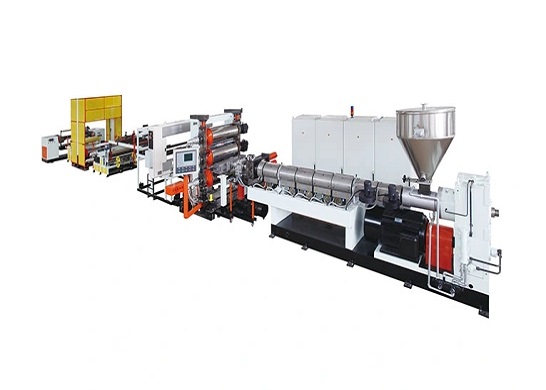Introduction to plastic extrusion technology
Plastic extrusion technology, also known as extrusion molding in plastic processing, utilizes the pressure of a hydraulic press on the mold itself for extrusion, called extrusion. It refers to a processing method where materials are heated and plastified while being pushed forward by the screw, continuously passing through the machine head to form various cross-sectional products or semi-products. Jwell's plastic extrusion technology is an efficient, continuous, low-cost, and adaptable molding processing method. It is one of the earliest technologies in polymer material processing. After more than 100 years of development, plastic extrusion technology has become a method with the most product variety, the most changes, high productivity, strong adaptability, wide application, and the highest proportion of production in the field of polymer processing.
The basic process of Jwell's plastic extrusion technology
Feeding
After the plastic is added to the hopper, it relies on its weight or is forced into the space of the screw thread groove under the action of the forced feeder, and moves towards the head of the machine under the push of the screw thread.
Conveying
After entering the screw groove, for every turn of the screw, all the plastic will be conveyed forward by one pitch. At this time, the conveying rate is called 1. However, for the screw, the forward conveying amount mainly depends on the friction coefficient of the plastic with the barrel (fb) and the friction coefficient of the plastic with the screw (fs). The larger the fb or the smaller the fs, the more the solid plastic will be conveyed forward.
Compression
During extrusion, the compression of plastic is absolutely necessary. First, plastic is a poor conductor of heat, and if there are gaps between the particles, it will directly affect heat transfer, thereby affecting melting speed. Secondly, only under the gradually increasing pressure along the length of the screw can the gas between the particles be expelled from the hopper. Otherwise, the product will become defective or waste due to internal bubbles. Lastly, higher system pressure also ensures that the products are more compact.
Melting
As the pressure increases, the moving solid plastic continuously contacts and frictionates with the heated barrel wall. The plastic temperature near the barrel wall continuously increases, and after reaching the melting point, a thin layer of molten film forms on the inner wall of the barrel. As melting progresses, when the thickness of the molten film is greater than the gap between the screw and the barrel, the moving screw thread will scrape off the molten film, forming a molten pool in front of the pushing face of the screw thread.
Mixing
During extrusion, under high pressure, solid materials are generally compressed into a dense solid plug. Due to the lack of relative motion between particles in the solid plug, mixing can only occur between the layers of the melt that have relative motion.
Exhaust
Advantages of Jwell's plastic extrusion technology
As a leading extrusion machine company, Jwell's plastic extrusion technology has following advantages:
Simple equipment and low investment
Continuous production with high production efficiency
High degree of automation and low labor intensity
Simple production operation and easy process control
Uniform and dense extruded products with high quality
Strong adaptability to raw materials, suitable for most thermoplastic materials and a small amount of thermosetting materials
Wide range of applications, one machine with multiple uses
Small footprint for production lines and clean production environment

 EN
EN 

